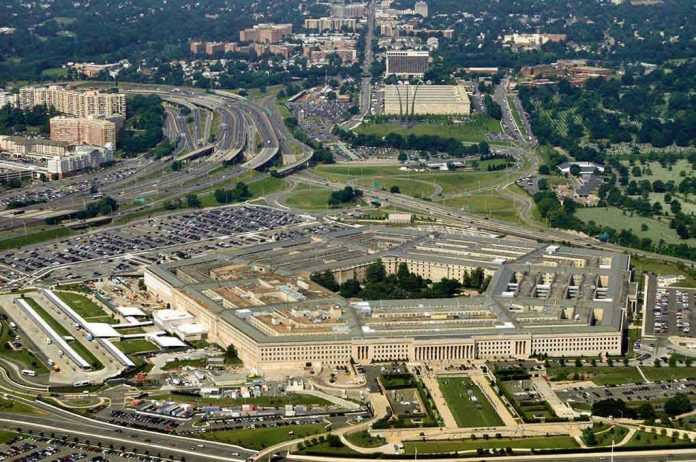
Defense Secretary Pete Hegseth has launched the most aggressive overhaul of the Pentagon’s leadership in decades, reshaping the military’s hierarchy with unprecedented speed and ideological clarity.
Story Snapshot
- Hegseth removed or pressured out multiple top generals and admirals within months of taking office.
- An emergency meeting at Quantico brought hundreds of senior officers together under minimal notice, signaling a new era of military leadership.
- Trump’s direct involvement and the unveiling of 10 new directives marked a sharp departure from traditional Pentagon operations.
- The restructuring focuses on eliminating diversity initiatives and restoring a “warrior ethos” centered on combat readiness.
- While military recruiting has surged, senior officers express deep concerns about institutional stability and merit-based decision-making.
Unprecedented Leadership Shake-Up
Since assuming office in 2025, Defense Secretary Pete Hegseth has replaced or forced the early retirement of several of the military’s highest-ranking officers, including the Chairman of the Joint Chiefs of Staff and the Chief of Naval Operations. This sweeping purge represents one of the most dramatic leadership changes in recent Pentagon history. The rapid pace and ideological framing of these moves have left many senior officers questioning the future of military culture and institutional continuity.
The restructuring began with a May 2025 directive ordering the Pentagon to slash senior general and admiral positions by at least 20 percent at the four-star level and 10 percent across all ranks. This move signaled a broader review of command structures and staffs, with consolidation and cultural transformation as central goals. The administration’s stated aim is to eliminate what it calls “woke” policies and refocus the military on combat readiness and traditional values.
The Quantico Meeting: A Turning Point
On September 30, 2025, Hegseth convened an emergency gathering of hundreds of top generals and admirals at Marine Corps Base Quantico. The meeting, called with minimal advance notice, was attended by President Donald Trump, who emphasized the administration’s commitment to a “fighting and winning machine.” Hegseth unveiled 10 new directives, including stricter physical fitness standards, mandatory training requirements, and a “cultural refresh” for the civilian workforce. Officers who disagreed with the new priorities were told to resign.
The Quantico meeting marked a significant departure from the Pentagon’s usual leadership transition patterns. The direct involvement of the president and the explicit ideological framing of the directives signaled a new era of political influence over military leadership. The event was widely seen as a demonstration of executive authority, with Hegseth making it clear that loyalty to the administration’s vision would be paramount.
Impact on Military Culture and Operations
The restructuring has produced mixed results. Military recruiting has surged, suggesting that Hegseth’s approach resonates with some segments of the population. However, senior officers express concerns about the long-term impact on institutional stability and merit-based decision-making. The rapid pace of changes has created potential gaps in leadership and continuity, raising questions about operational effectiveness during transitions.
Critics argue that the focus on eliminating diversity and inclusion initiatives may alter the military’s approach to recruitment, retention, and leadership development. The planned consolidation of military commands and staffs could significantly alter operational structures. Acquisition reform initiatives may also reshape defense industry relationships, with the Pentagon driving development and fielding of small tactical drones in large numbers.












